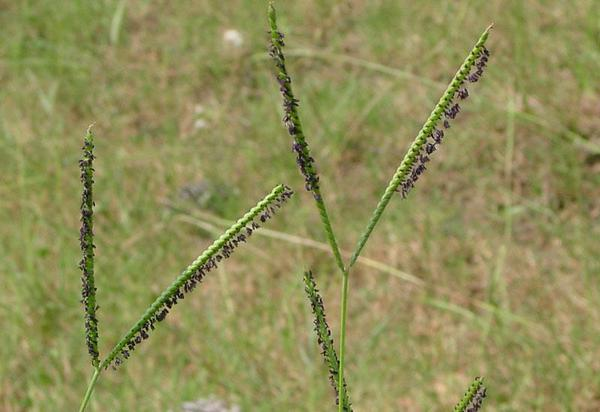From the Vine – Bahiagrass
go.ncsu.edu/readext?945519
en Español / em Português
El inglés es el idioma de control de esta página. En la medida en que haya algún conflicto entre la traducción al inglés y la traducción, el inglés prevalece.
Al hacer clic en el enlace de traducción se activa un servicio de traducción gratuito para convertir la página al español. Al igual que con cualquier traducción por Internet, la conversión no es sensible al contexto y puede que no traduzca el texto en su significado original. NC State Extension no garantiza la exactitud del texto traducido. Por favor, tenga en cuenta que algunas aplicaciones y/o servicios pueden no funcionar como se espera cuando se traducen.
Português
Inglês é o idioma de controle desta página. Na medida que haja algum conflito entre o texto original em Inglês e a tradução, o Inglês prevalece.
Ao clicar no link de tradução, um serviço gratuito de tradução será ativado para converter a página para o Português. Como em qualquer tradução pela internet, a conversão não é sensivel ao contexto e pode não ocorrer a tradução para o significado orginal. O serviço de Extensão da Carolina do Norte (NC State Extension) não garante a exatidão do texto traduzido. Por favor, observe que algumas funções ou serviços podem não funcionar como esperado após a tradução.
English
English is the controlling language of this page. To the extent there is any conflict between the English text and the translation, English controls.
Clicking on the translation link activates a free translation service to convert the page to Spanish. As with any Internet translation, the conversion is not context-sensitive and may not translate the text to its original meaning. NC State Extension does not guarantee the accuracy of the translated text. Please note that some applications and/or services may not function as expected when translated.
Collapse ▲Summer finally arrived this week and it already seems like it’s going to be a hot and humid summer. Cool spring temperatures and overcast skies have extended our spring and late winter plants life cycles and slowed some of our summer plants growth. One plant, or rather pest that has really come on strong the last few weeks is Bahiagrass.
Bahiagrass (Paspalum notaum) is a warm-season grassy weed that spreads by rhizomes and seeds, and most noticeably recognized by its distinctive “Y” shaped seedhead. It is commonly referred to as “highway grass” because it is used by the DOT on roadsides to prevent erosion and to create an immediate groundcover. It tolerates heat, drought and a wide range of soils and can become a pesky weed in the landscape. Because this plant is so hardy, it can become difficult to control in the home lawn. The best way to prevent Bahiagrass from becoming established in your lawn is to maintain the health and density of your turfgrass species by soil sampling, fertilizing, irrigating, and mowing at the proper height. NC State has created lawn maintenance calendars that can help you determine the best-recommended practices for each lawn species. The calendars can be found online.
If Bahiagrass has already become established in your lawn it can either be dug up and burned or treated with an herbicide. If an herbicide treatment is warranted, treatments should be timed appropriately for optimum effectiveness. Treat 3 to 5 days after mowing. Utilize post-emergent herbicides May thru July while the Bahiagrass is actively growing. Products containing Sethoxidim, Atrazine, and Metsulfuron can be used on Centipede grass. Products containing Metsulfuron can be used on Bermuda, St. Augustine, and Zoysiagrass. Products containing Imazaquin can be used on Bermudagrass and Zoysiagrass. Make sure when applying herbicides that you read the label and follow all instructions. It will take repeated herbicide applications and at least 2 years to control large infestations of Bahiagrass.




